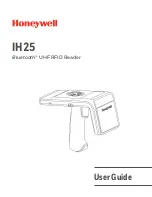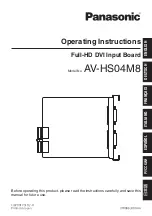
8
NOTICE
• Always use an air line filter and lubricator with an HLK
hoist.
Air Line Lubricator
Refer to Dwg. MHP0191.
Always use an air line lubricator with these hoists. Use a
lubricator having an inlet and outlet at least as large as the inlet
on the hoist motor. Install the air line lubricator as close to the
air inlet on the hoist motor as possible. Refer to
“ACCESSORIES” in the parts section for the recommended
Filter-Lubricator-Regulator.
CAUTION
• Lubricator must be located no more than 10 ft (3 metres)
from the hoist motor.
• Shut off air supply before filling air line lubricator.
The air line lubricator should be replenished daily and set to
provide lubrication at a minimum rate of 1 to 3 drops per minute
adjusted at maximum hoist speed, of SAE 10W oil or a good
grade of hydraulic oil.
CAUTION
• Do not use automotive type detergent oil. Detergents will
delaminate the motor vanes and cause premature failure.
Air Line Filter
Refer to Dwg. MHP0191
It is recommended that an air line strainer/filter be installed as
close as practical to the motor air inlet port to prevent dirt from
entering the motor. The strainer/filter should provide 10 micron
filtration and include a moisture trap. Clean the strainer/filter
monthly to maintain its operating efficiency. Refer to
"ACCESSORIES" in the parts section for the recommended
Filter-Lubricator-Regulator.
Moisture in Air Lines
Moisture that reaches the air motor through the supply lines is
the chief factor in determining the length of time between
service overhauls. Moisture traps can help to eliminate moisture.
Other methods, such as an air receiver which collects moisture
before it reaches the motor or, an aftercooler at the compressor
that cools the air prior to distribution through the supply lines,
are also helpful.
The swivel inlet assembly (includes items 23 through 24C) must
be installed on the hoist. Failure to do so may result in a hoist
malfunction.
When installing the hoist and trolley on the beam, make certain
the side plates are parallel and vertical. After installation,
operate the trolley over the entire length of the beam with rated
load suspended 4 to 6 inches (100 to 150 mm) off the floor.
CAUTION
• To avoid an unbalanced load which may damage the
trolley, the hoist must be centered under the trolley.
NOTICE
• Trolley wheels ride on the top of the lower flange of the
beam.
Ensure beam stops are installed prior to operating hoist and
trolley.
Chain Container
Refer to Dwgs. TPC451-3 and MHP1029 and the
“MAINTENANCE” section for detailed assembly and
disassembly information.
NOTICE
• Make certain to adjust the container support such that the
chain container does not contact the load chain or hook.
• Operate the hoist to naturally pile chain into the chain
container. Piling the chain carelessly into the container by
hand may lead to kinking or twisting that may cause chain to
jam the hoist.
1.
Check the chain container size to make sure the length of
load chain is within the capacity of the chain container.
Replace with a larger chain container, if required.
2.
Attach the chain container to the hoist.
3.
Run bottom block to lowest point and run hoist in up
direction to feed the chain back into the container.
WARNING
• Disconnect the hoist from the air supply before installing a
chain container kit.
Air System
The supply air must be clean, lubricated and free from water or
moisture. A minimum air supply of 70 scfm (1.96 cu. m/m) at 90
psig (6.3 bar/630 kPa) at the hoist motor inlet is required, during
operation to provide rated hoist performance.
Air Lines
The inside diameter of the hoist air supply lines must not be
smaller than 1/2 in (13 mm) for up to 12 ft (4 m) lengths and 3/4
in (19 mm) for up to 50 ft (15 m) lengths between the air supply
and the hoist. Contact the factory for recommended air line sizes
for distances greater than 50 ft (15 m). Before making final
connections, all air supply lines should be purged with clean,
moisture free air before connecting to unit inlet. Supply lines
should be as short and straight as installation conditions will
permit. Long transmission lines and excessive use of fittings,
elbows, tees, globe valves, etc. cause a reduction in pressure due
to restrictions and surface friction in the lines. Fittings used at
the inlet of the hoist must have at least a 3/8 in (10 mm) air
passage. Use of smaller fittings will reduce performance.
Содержание HL1000K
Страница 33: ...33 HOIST PARTS SECTION GUIDE ...
Страница 34: ...34 HOIST HOUSING ASSEMBLY PARTS DRAWING ...
Страница 36: ...36 HOIST VALVE CHEST ASSEMBLY PARTS DRAWING ...
Страница 38: ...38 HOIST GEARING ASSEMBLY PARTS DRAWING ...
Страница 40: ...40 HOIST BRAKE ASSEMBLY PARTS DRAWING ...
Страница 44: ...44 HL1000K HL1000KR AND HL1500K HOOK ASSEMBLY PARTS DRAWING ...
Страница 46: ...46 HL2000K AND HL3000K HOOK ASSEMBLY PARTS DRAWING ...
Страница 48: ...48 HL4500K HOOK ASSEMBLY PARTS DRAWING ...
Страница 50: ...50 HL6000K HOOK ASSEMBLY PARTS DRAWING ...
Страница 52: ...52 PENDANT ASSEMBLY PARTS DRAWING ...
Страница 54: ...54 FABRIC CHAIN CONTAINER ASSEMBLY PARTS DRAWING ...
Страница 56: ...56 METAL CHAIN CONTAINER ASSEMBLY PARTS DRAWING ...








































